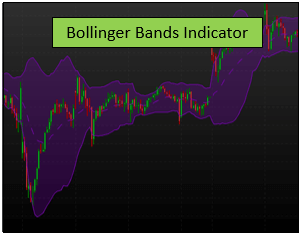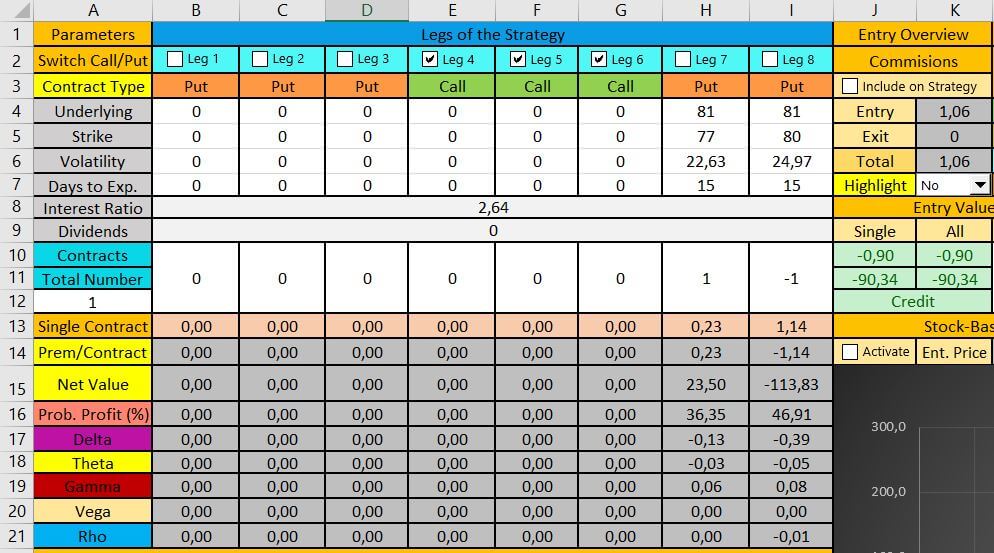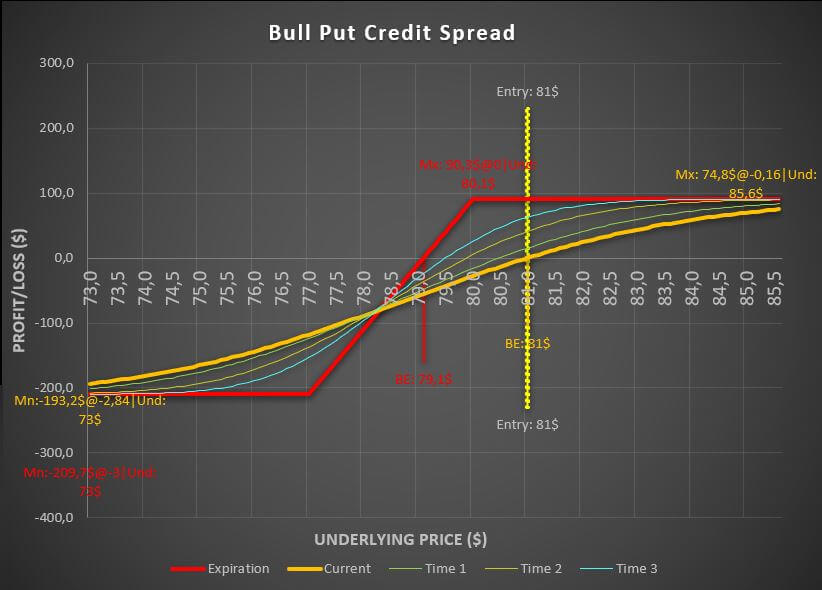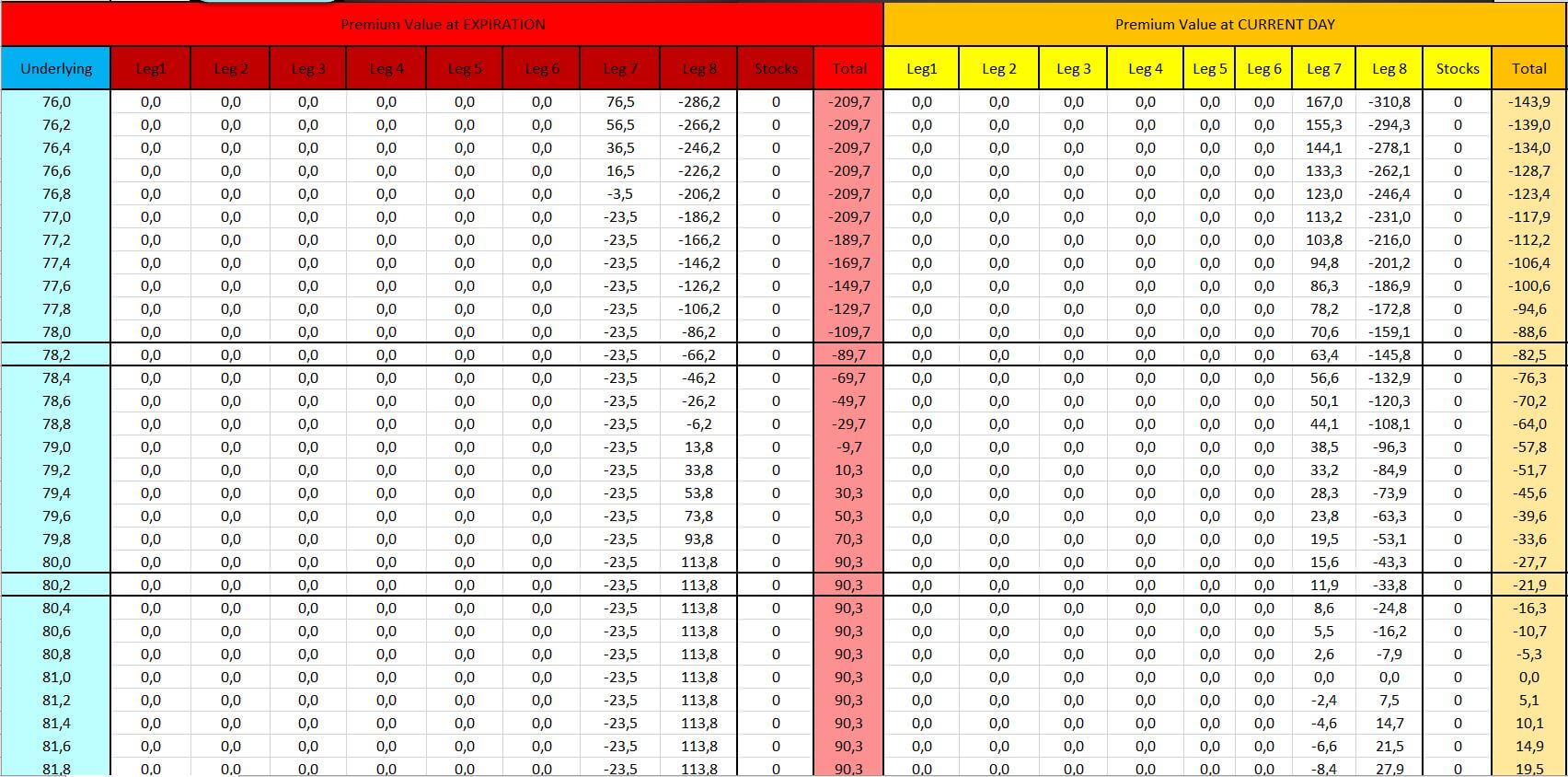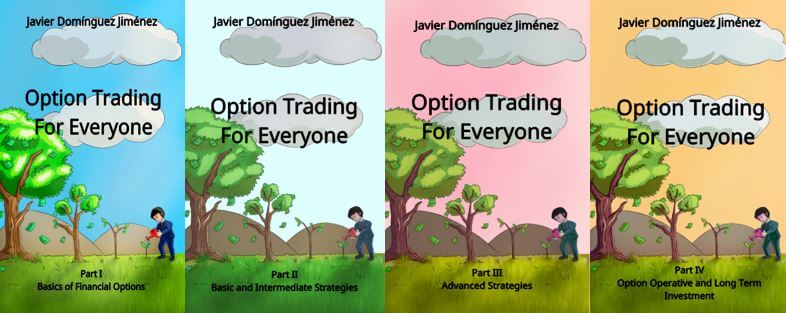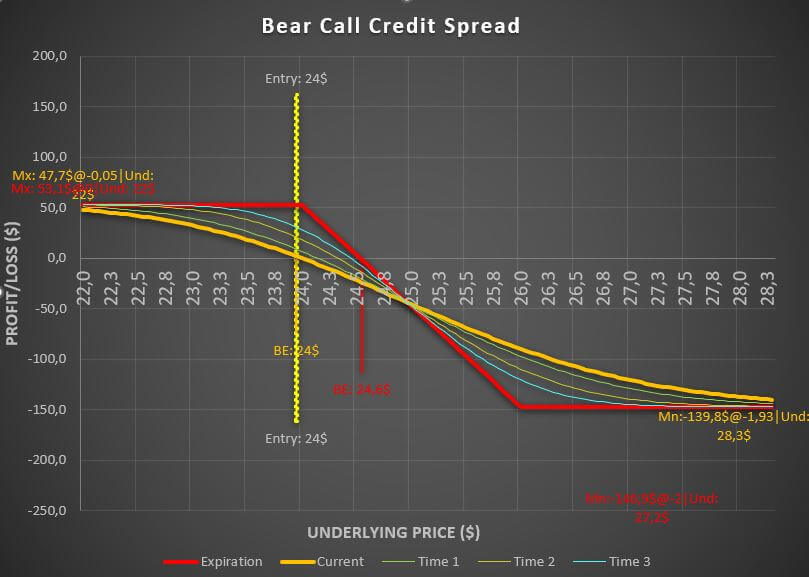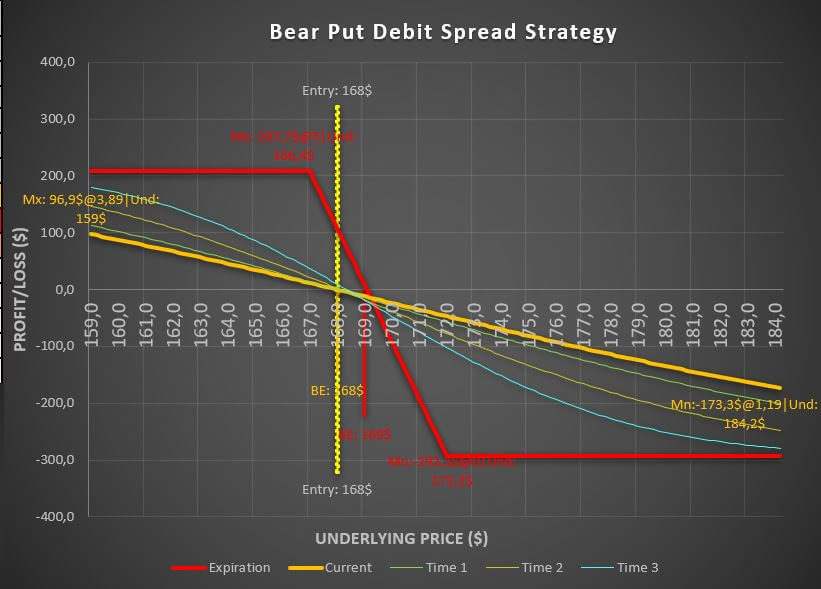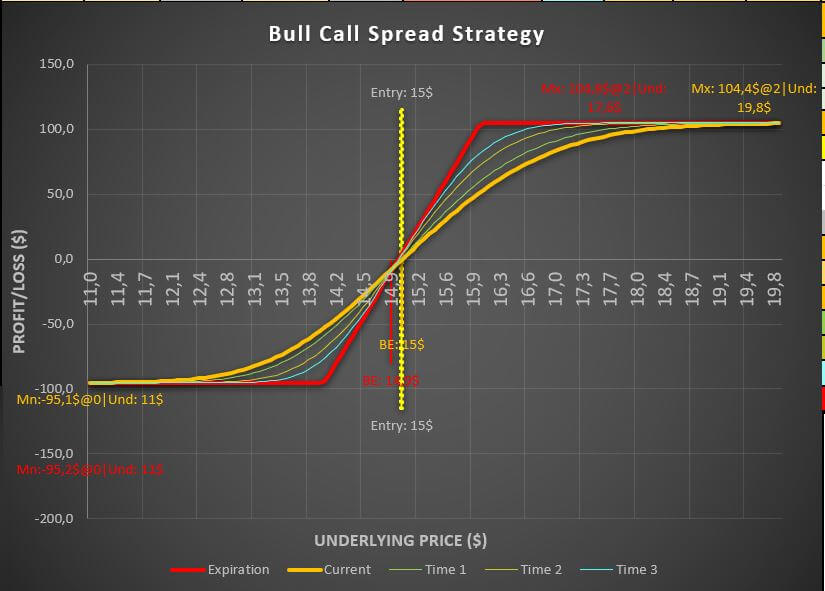Bull Put Spread – A Neutral Bullish That Outperforms Selling Naked Options
One of the most used option spread is the bull put spread due to the great advantage it provides when we compare it to the selling put strategy.
Today, we are going to learn what is the bull put credit spread strategy. We will take a look at how it works, we will analyze the risk-reward ratio when the expiration date arrives, and we will discuss the maximum profit and maximum loss that we can find in this option strategy.
Table of Contents
What is a bull put credit spread strategy?
The bull put spread is an options trading strategy that tries to take advantage of both the selling and the buying options.
When we are dealing with the bull put credit spread strategy, we will be selling a put option contract while, at the same time, we will be buying another one.
When to use the bull put credit spread strategy?
The main objective of the bull put credit spread strategy is to ensure that the underlying does not decrease below the strike prices at which we have opened the trade.
At the expiration date, we will not care whether the underlying has increased or remained where it was. As long as it does not fall below the strikes, the strategy will be a winner trade. Besides, the bull put spread inherits many of the advantages of selling options as time decay, which will benefit this time.
We should be using the bull put credit spread strategy when we believe the price of the underlying asset is not going to decrease under a certain threshold, that we will define later better.
To help you identify this better, we highly recommend you to use a technical analysis indicator in which support our trade. For example, the Bollinger Bands are a good indicator that will tell us where the stock price is likely to move.
How is the bull put credit spread composed?
As with the other spread strategies, this one has a limited profit and loss mechanism, so we will be able to eliminate many of the drawbacks of selling naked options.
The bull put spread consists of selling a put contract with a strike price above the strike price of the second put contract, which is bought.
This way, every time we open a trade, we will be receiving money since the strike we obtain will always be cheaper than the one we have sold.
This is known as a credit spread, as is the case with its counterpart, the bear call credit spread, since, as we said, we are receiving a profit by opening the position. Let us look at an example to learn how it works.
Do you need a Calculator that helps you create and analyze any option strategy in record time? |
Bull put spread example
Let us suppose we want to open a trade on the company JPMorgan Chasse. Since we have analyzed the market, we know that prices are not going to fall below $80 during the next two weeks.
Assuming that the underlying is currently at $81, we decide to open a bull put spread, which is created by selling a put option with a strike price of $80 and buying another put option at a $77 strike price, both with 15 days to the expiration date.
Bull Put Spread Calculator
According to our bull put spread calculator, we will have to pay $23 for the contract we buy, while we will receive $114 for the contract we sell.
Therefore, the bull put credit spread will provide us with a total credit of $91 for each of the bull put spreads that we decide to open.
Bull put spread payoff diagram
The following step is to learn the profit and loss we can expect in this bull put spread example. In general, with a bull put credit spread strategy, we will make a profit as the underlying prices increase in value while we will be obtaining a loss as the price of the asset falls.
Since the selling side is the predominant force in this strategy, the bull put spread inherits most of its advantages. Time decay, then, will be favorable to our trade. That is because what we want with this strategy is time to pass without the underlying falling below the highest strike.
This means that as time goes by, our position will gain value because the premiums of both options will fall. Therefore the bull put spread payoff diagram will be more and more favorable until, in the expiration date, it will be like this.
Bull put spread payoff diagram
Breaking down the credit put spread option strategy
As you can see, we have two scenarios at the extremes.
If the underlying is above the highest strike, i.e., $80, we will keep the full premium we received at the opening of the trade. In other words, we will have made a maximum profit of $91.
Now, if the underlying falls below the lowest strike price, which turns out to be $77, we will have taken the maximum loss, as we will be assigned the $80 strike price.
The losses, in this case, will result from subtracting the lowest strike price minus the premium we received when we opened the trade. Therefore, we will have a loss of $300, which we will have to deduct from the premium we received when we opened the trade.
However, if the underlying falls between the two strikes, our trade will enter the area of the curve where, depending on the underlying, it will generate profits or losses. The break-even point is obtained by subtracting the premium from the highest strike. That is, in this bull put spread example, it is $79.09.
Bull put credit spread margin requirement
When we wish to open a bull put spread strategy, the broker will ask us to have a specific quantity of money to open the trade. In other words, we will need to have a margin account to be able to open this strategy.
In our bull put spread example, the maximum loss we could obtain was $209 per spread. However, the broker will ask us to have a margin of $300 in our account in this example. The margin is calculated by subtracting the differences between the strike prices of our spread.
As we were selling the $80 strike price and buying the $77 strike price, the broker will ask us for $300 to open the trade. We can always reduce the margin required by picking another strike in the option chains.
Last words about the credit bull put spread
As you can see, this strategy tries to limit the loss that is obtained when selling a one-legged option contract in exchange for reducing a certain value of the maximum profit obtained, unlike other strategies like the sold straddle.
The great advantage of this bull strategy is that we must ensure prices simply do not fall against us, regardless of whether the value stays where it is or increases in our favor, so we can keep the premium as a profit with a much higher probability.
